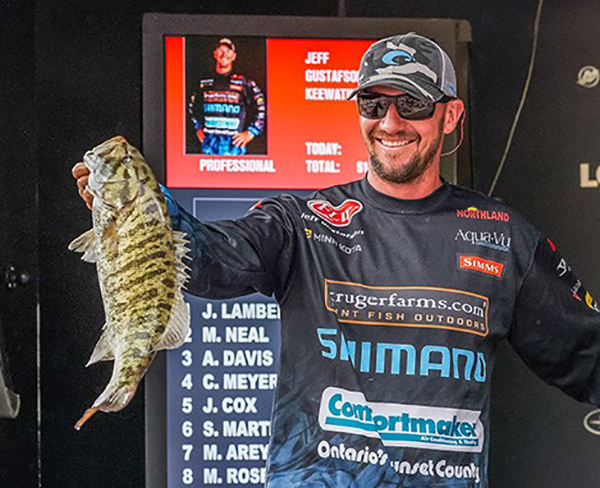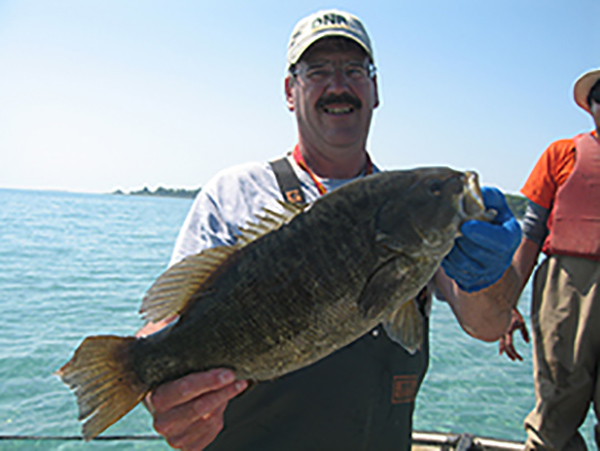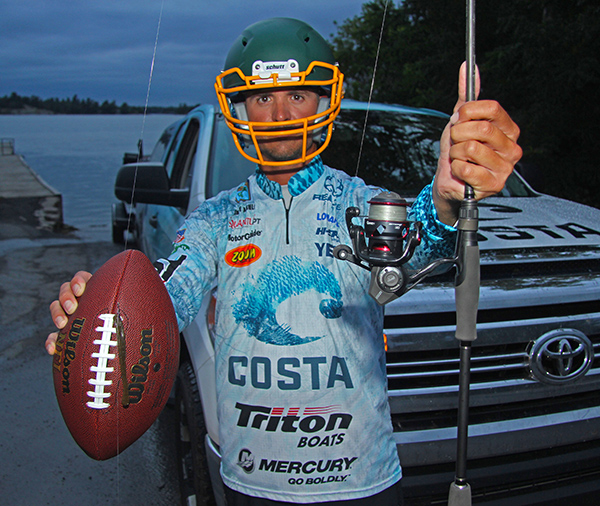- Details
Provided by Aqua-Vu
 Tournament Anglers Credit Underwater Surveillance for Success in Competitive Events
Tournament Anglers Credit Underwater Surveillance for Success in Competitive Events
Anyone who's fished North America's best bass lakes in recent seasons has seen the signs: Clearing waters; schools of trophy bass shifting deeper and deeper; tournament game plans revolving around off-shore structure, anglers mining small, specific sections of underwater real estate.
For Jeff "Gussy" Gustafson-the popular, successful FLW Tour bass pro-probing deep water has long ranked high among his impressive set of fishing skills. Beginning almost two decades ago, Gussy launched an incredible string of tournament wins, taking the title at Canada's most prestigious bass tournament, the Kenora Bass International in 2000. He won the event again in 2008, along with partner Chris Savage. In 2005, Gustafson and partner Scott Dingwall won the inaugural International Falls Bass Championship-another highly competitive bass event that attracts a who's-who list of elite-level anglers.
On August 25, Gustafson and Dingwall won the two-day I-Falls Bass Championship for an unprecedented fifth time, extracting 40-pounds of smallmouth bass from small, deepwater sweet spots. "In the summer, almost every hump on Rainy Lake has walleyes on it," noted Gustafson, ranked #11 in the FLW Tour's Angler of the Year race. "But only certain spots hold big smallmouths.
- Details
MDNR Report
 Studies Show Lake Michigan Smallies Will Travel Great Distances
Studies Show Lake Michigan Smallies Will Travel Great Distances
For so long it was believed that smallmouth bass didn't travel that far or intermix their populations - especially in a large waterbody like Lake Michigan. But early studies, originating in the mid-1950s by Dr. Carl Latta, hinted that smallmouth bass just may travel much farther than researchers initially understood.
Historical data on the northern Lake Michigan smallmouth bass population was collected via very limited surveys from the mid-1950s, through the late 1990s. Then in 2005, an ongoing smallmouth bass survey was launched jointly with Central Michigan University (CMU) to look at population trends in the species.
When the study was initiated, the Beaver Island Archipelago area was chosen as the main study area. It was the location of CMU's biological station and more importantly the residents of Beaver Island were concerned about the local bass population believing increasing numbers of cormorants locally were the direct cause of the decline in the local bass population. In 2009, the study area was expanded to include the Waugoshance point area, then again in 2014 to include Grand Traverse Bay.
"Historically the local bass fishery was considered world-class and drew in a lot of anglers," explained a DNR fisheries research technician out of Charlevoix, John Clevenger. "All of a sudden the fishery was low - the cormorant populations were high - and we wanted to try to see what truly caused the bass to decline."
- Details
By Al McGuckin
 Ashley Talks Football – and St. Lawrence River Is Full of ‘Em
Ashley Talks Football – and St. Lawrence River Is Full of ‘Em
As a tight end for the Dixie Hornets in rural South Carolina, 2015 Bassmaster Classic Champ Casey Ashley didn’t get to touch the ball much.
“We ran the wishbone all the time, so my job was to block,” says Ashley. “Every team in the county knew what play we were gonna run next, but the tough part was stopping us.”
After two full days of practice at the 2018 Huk Bassmaster Elite on the St. Lawrence River separating New York and Canada, Casey has already had his hand on several footballs -- big, fat, bronze colored footballs with fins, better known as smallmouth bass.
“I ain’t gonna lie, I’ve already touched a handful of smallies over 4-pounds, and I think a whole bunch of other pros probably have too,” grinned Ashley. “I actually think the fish have gotten bigger on the St. Lawrence since we competed here last summer.”





